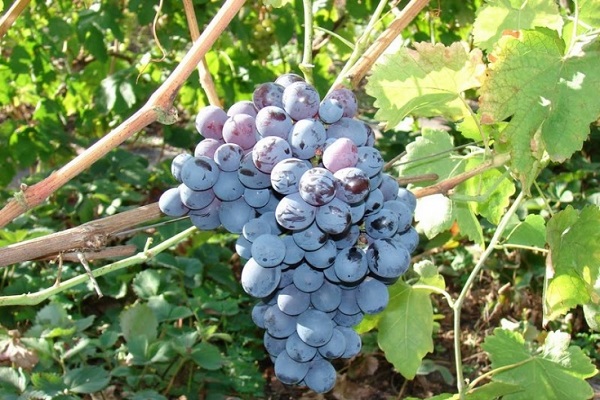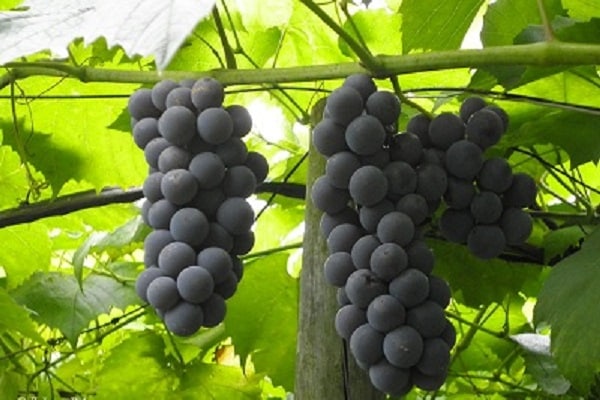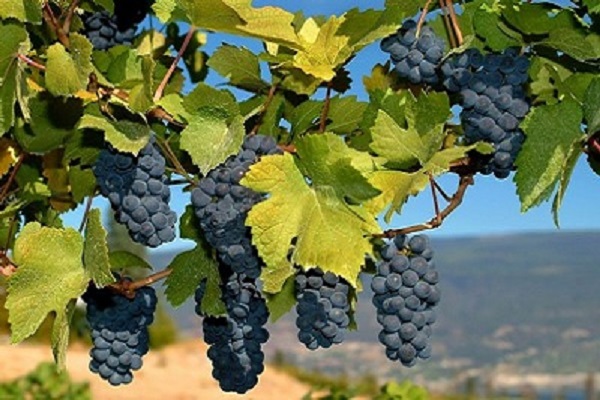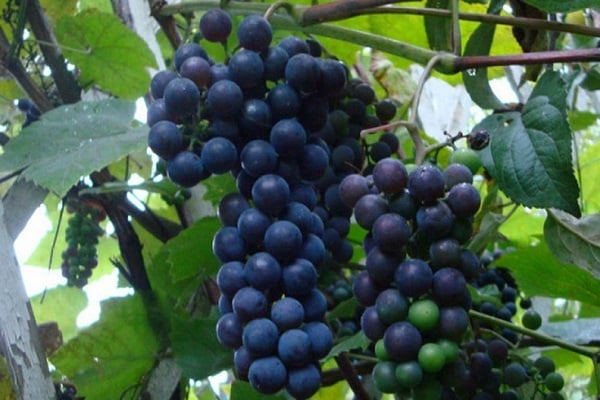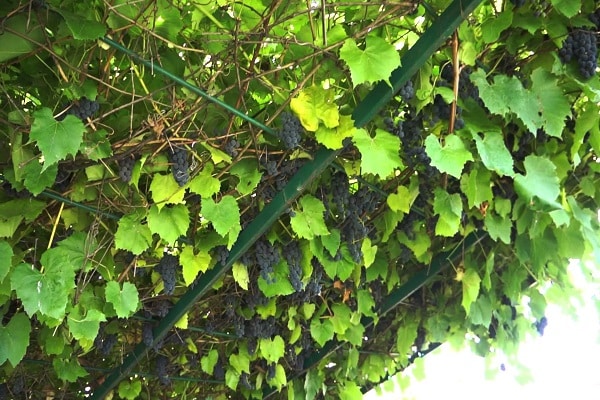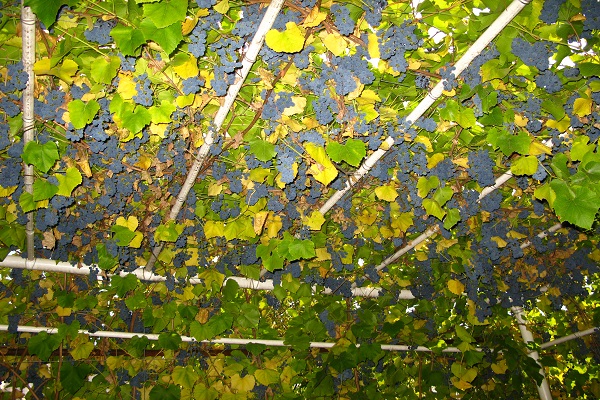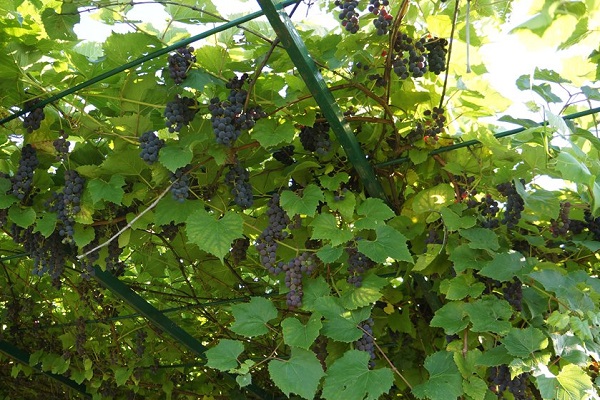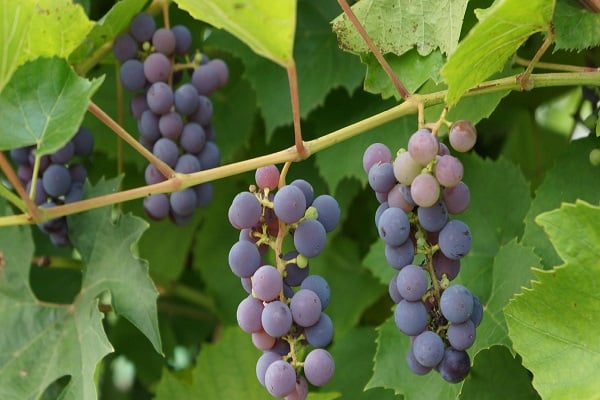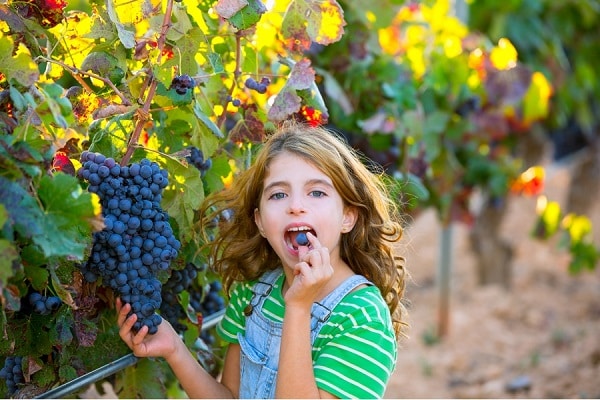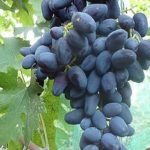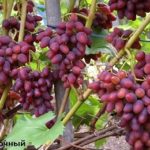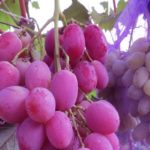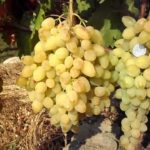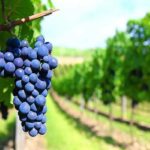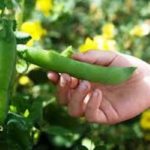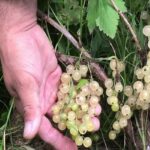Summer residents are actively planting landscaping with Alpha grapes. This is a well-known technical variety. Vigorous bushes beautifully entwine gazebos and pergolas. The hedges are filled with purple clusters in autumn.
Growing grapes is quite simple: this variety is suitable for working gardeners. Alpha makes excellent dry and semi-dry wines. In the fall, summer residents receive enough raw materials to prepare natural drinks.
Breeding history
The Alpha variety is quite well known. He is over 70 years old. The grapes were obtained in the USA. Two varieties were taken as a basis: Labrusca and Riparia.
Alpha was tested first near Odessa, then in a vineyard near Brest. According to the results, grapes became widespread throughout the USSR. They began to grow it as a technical one.
Description of the variety
Alpha is an excellent pollinator. It is often used to pollinate self-sterile varieties. Description of the variety:
- the plant takes root and adapts easily;
- the bush is prone to overgrowing;
- late ripening variety (150 days from awakening of the vine to harvest);
- the bush is vigorous (the vine stretches up to 9 m);
- the vine is dense;
- the bush is prone to overload with fruits;
- the leaf is bright green, large (25 cm long, 30 cm wide);
- the variety is resistant to temperature changes;
- the fruits do not fall off the bush within 2-3 weeks after the harvest ripens;
- active shoot growth (regular trimming required);
- excellent rooting of cuttings (98%).
Alpha has a number of advantages: it produces a consistently high yield (10 kg per bush), unpretentiousness, and frost resistance.
Characteristics
The Alpha variety has the following characteristics:
- frost resistance of the vine up to -45 degrees Celsius, of the root system up to -12;
- the color of the berries is purple, with a slight brownish coating;
- berries are round;
- maximum grape weight 3 g;
- brushes of medium density, elongated;
- average brush weight - 90 g, maximum - 250 g;
- the pulp is dense, juicy, sour;
- sugar content - 16%;
- the skin is dense.
Alpha is stored in a cool place without loss of taste and marketability for up to a month.
Advantages and disadvantages
Alfa grapes are popular among gardeners. Its advantages:
- unpretentiousness;
- frost resistance of the vine and root system;
- ease of cultivation;
- rapid survival;
- resistance to weather changes;
- consistently high productivity;
- rapid vine growth;
- use as a pollinator for self-sterile varieties;
- the use of both the root form and the scion;
- the possibility of using the variety for landscaping.
But Alpha also has disadvantages:
- weak resistance to diseases;
- low tasting score;
- tendency to overgrow;
- the need for constant stepsoning.
The Alpha variety is suitable for growing raw materials for wine in regions with a short warm period.
Selection and planting of seedlings
Alpha is easy to care for. But to get a harvest you need to follow the recommendations:
- Healthy rooted cuttings are suitable for planting. The root system, underground and above-ground parts must be well developed.
- Any grape variety can be used as a rootstock. A healthy cutting of Alpha is taken for the scion. It is recommended to graft in any convenient way (in a split, in an overlay).
- The landing site should be sunny, protected from northern and northeastern winds. Grapes should be planted near the southern and southwestern walls of country houses. It is recommended to take into account the size of the bush: it is required to retreat 2.5-3 m from the walls.
- The winegrower must take care of support for the vine in advance. The plant overloads itself with fruits. Untied stems break and the harvest is lost.
- The depth of groundwater at the site is 3-4 m. The grapes do not tolerate waterlogging of the soil. To prevent wetting and rotting of the root system, drainage must be done before planting. To do this, you need to crush crushed stone, brick, tiles and pour a layer of 7-10 cm onto the bottom of the planting hole. This simple measure will prevent stagnation of water at the roots.
- The variety prefers soils that are fertile, loose, with a neutral or slightly alkaline reaction.It is recommended to deoxidize acidic ones by adding lime (1 liter per square meter). To obtain permeable soil, add perlite, neutral peat, and sand.
- Alpha takes root well when planted in early spring or mid-autumn.
It is recommended to purchase grapes in nurseries or specialized stores: this way you can avoid disappointment.
Features of care
Alpha is an unpretentious variety to grow. It grows quickly and bears fruit even for inexperienced winegrowers. But you need to follow the basic rules:
- Alpha is responsive to watering. The soil should be moistened during flowering and ovary formation. During the period of fruit ripening, it is recommended to stop watering: excessive soil moisture leads to cracking of the berries.
- It is recommended to combine watering with fertilizing. In spring, nitrogen fertilizers should be applied. In spring and autumn - mineral complexes.
- The variety is vigorous. It needs to be trimmed to uniformly lighten the ripening brushes. It is necessary to carry out chicking and pinching during the ripening period.
- Preparing for winter is impossible without formative pruning. All immature vines (they are green in color) should be removed. Then leave a replacement shoot (2 buds) and a fruiting vine above it (6-7 buds). It is necessary to leave up to 6 such segments on the main vine.
Grapes overwinter well without shelter. To protect the root system, it is recommended to mulch the tree trunk circle with sawdust with a layer of 15 cm.
About diseases and pests
Alpha grapes are resistant to fungal diseases. But it is affected by chlorosis, mildew, oidium, and anthracnose. Wasps and birds love to feast on fruits.
To prevent diseases, it is recommended to follow the watering and fertilizing regime. Traps should be placed to control wasps.Stretched protective nets help keep birds away.

